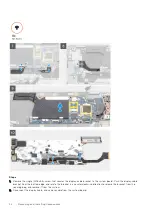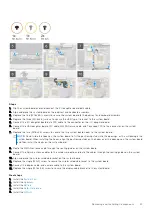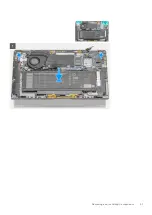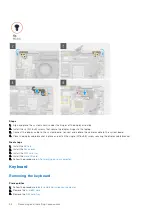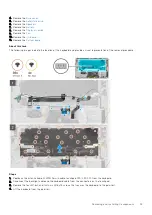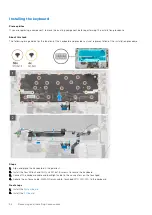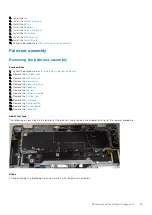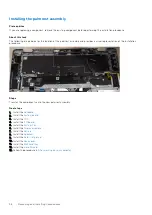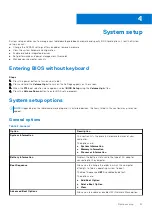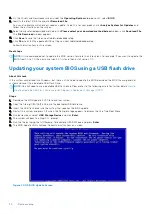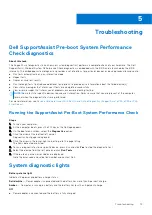
Table 2. General (continued)
Option
Description
The
Enable UEFI Network Stack
option is enabled by
default.
UEFI Boot Path Security
Allows you to control whether the system prompts the user to
enter the Admin password when booting to a UEFI boot path.
The options are:
●
Always, Except Internal HDD
(enabled by default)
●
Always, Except Internal HDD&PXE
(disabled by default)
●
Always
(disabled by default)
●
Never
(disabled by default)
If the Admin password is not set, these options have no
effect.
Date/Time
Allows you to set the date and time. The change to the
system date and time takes effect immediately.
System configuration
Table 3. System Configuration
Option
Description
SATA Operation
Allows you to configure the operating mode of the integrated
SATA hard drive controller.
The options are:
●
Disabled
(disabled by default)
●
AHCI
(disabled by default)
●
Raid on
(enabled by default)
Drives
These fields let you enable or disable various drives on board.
The
M.2 PCIe SSD-0
option is enabled by default.
SMART Reporting
This field controls whether hard drive errors for integrated
drives are reported during startup.
The option
Enable SMART Reporting
is disabled by default.
USB Configuration
Allows you to configure the integrated USB controller.
The options are:
●
Enable USB Boot Support
(enabled by default)
NOTE:
If the Fastboot option is set to "Minimal", the
"Enable USB Boot Support" setting is ignored, and the
system will not boot from any Preboot USB devices.
●
Enable External USB Port
(enabled by default)
NOTE:
A USB keyboard or mouse or both connected
to the platform's USB ports will continue to function
within BIOS Setup if this option is disabled.
Thunderbolt™ Adapter Configuration
Allows you to enable or disable Thunderbolt options:
●
Thunderbolt
(enabled by default)
●
Enable Thunderbolt Boot Support
(disabled by default)
●
Enable Thunderbolt (and PCIe behind TBT) Pre-boot
(disabled by default)
58
System setup

